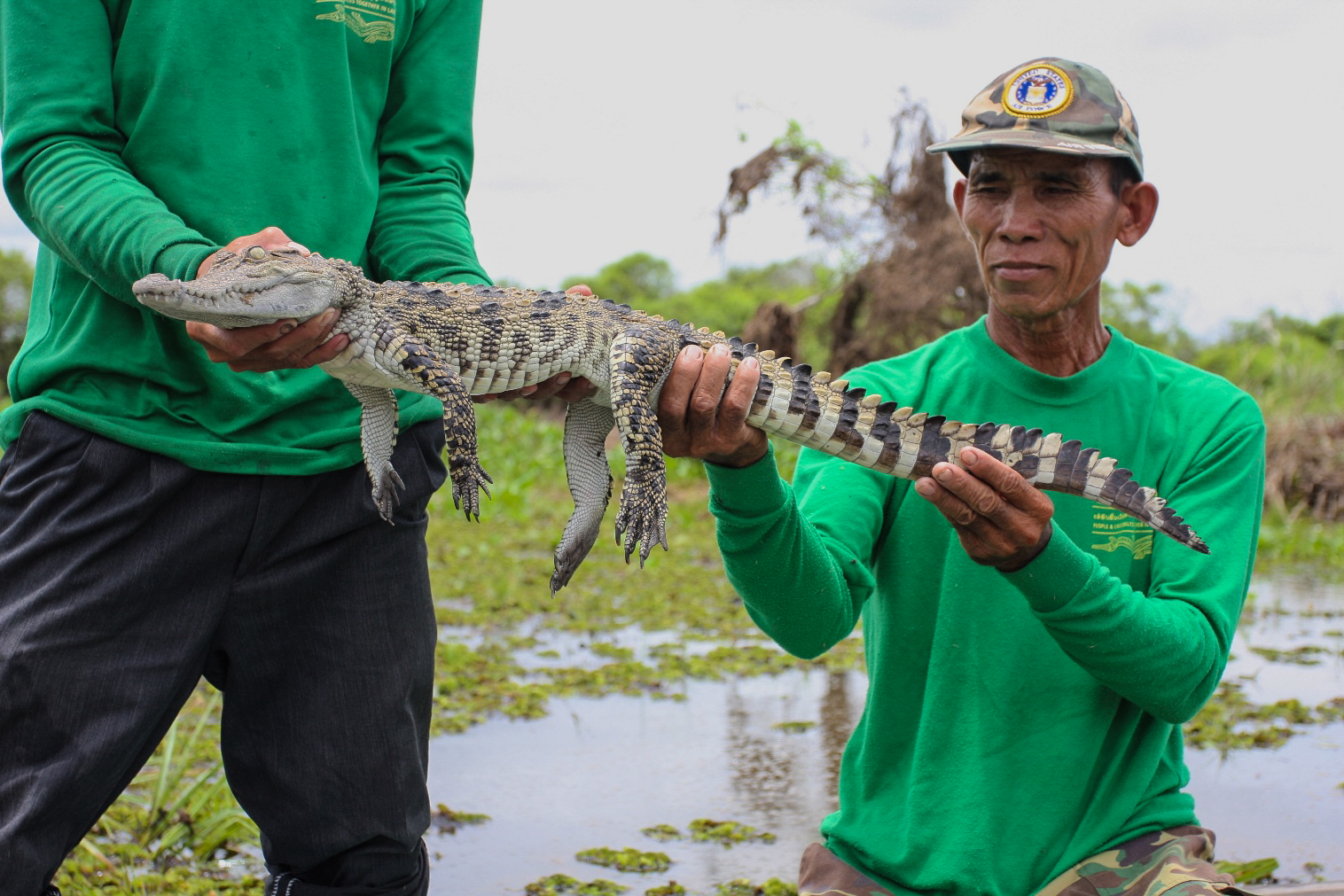Savannakhét (Lao:ສະຫວັນນະເຂດ), situated in the south of Laos, is the country's largest province. Its original name, Savanh Nakhone ("heavenly district" or "land of fertility suitable for agriculture"), hints at its remote, wet evergreen habitat.
%20(1)%20sm.jpeg?ver=2020-07-03-054904-307)
The Xe Champhone Wetland is the largest of Lao PDR’s two Ramsar sites and contains core habitat for a globally important population of the critically endangered Siamese Crocodile (Crocodylus siamensis) which once occurred throughout Southeast Asia and Borneo. Populations have declined during the past 50 years, with <1000 individuals remaining in the wild and C. siamensis is now ranked as Critically Endangered by IUCN. Remnant populations still occur in Laos and wild population recovery is prioritized by the IUCN/SSC Crocodile Specialist Group.

Above: The release of head-started juveniles in 2013-2014 is partially credited for the increase in crocodile populations reflected during 2018 surveys.
Conservation Challenges
The wetlands of Xe Champhone harbor Laos’ last Siamese Crocodiles. Weak zoning regulations, absent management plans, limited local employment opportunities, and growing anthropogenic pressures are inapposite to sustainable habitat use, and the wetlands are increasingly threatened by unsustainable fishing practices, fragmentation and conversion through agricultural intensification. Critical habitat degradation continues, despite their proven importance for biodiversity and livelihoods.
Conservation Approach
From 2008-2015, WCS initiated a program including:
- participatory land-use planning,
- establishment of village crocodile conservation committees (VCCCs) to lead village-based protection of wetlands, and
- feasibility of community-based tourism focusing on crocodile protection.
By designating core crocodile conservation areas within the Ramsar site, progress was made towards halting the decline of Siamese Crocodiles in Laos. Seven villages participated in the pilot project and remain active. Government commitment to develop a Ramsar site management plan will consider an integrated approach to conservation and expansion to include additional suitable crocodile habitat.
Improving wetland zoning and regulations within community-led land-use planning, and engaging communities in sustainable incentive-based resource use and protection schemes directly linking household income to biodiversity conservation outcomes will build on the success of these initial efforts.
Accomplishments
Surveys in 2018 strongly suggest crocodile populations are increasing as the result of:
- release of head-started juveniles in 2013-14, and
- continued recruitment from the small adult population.